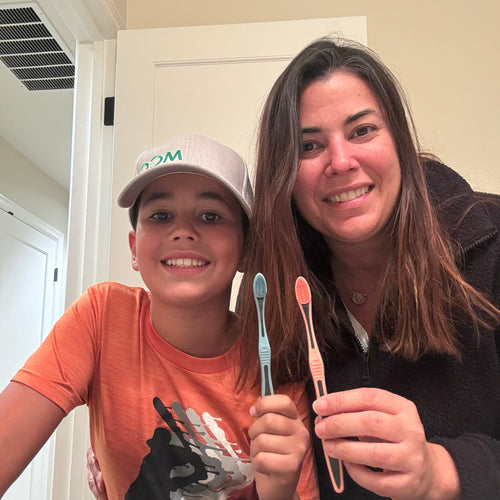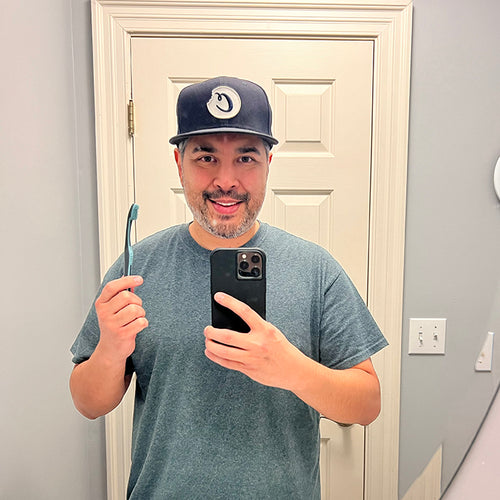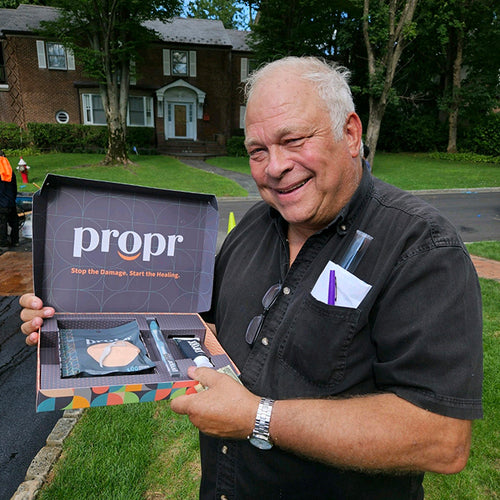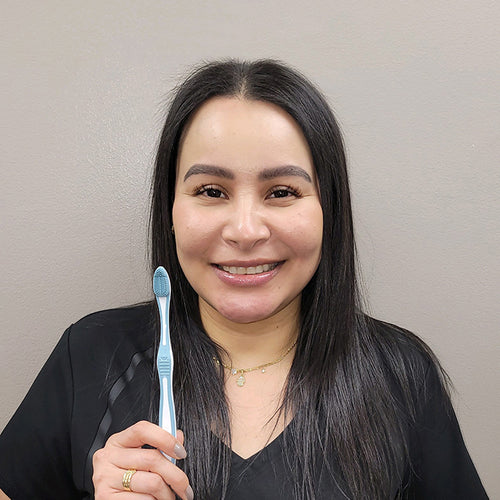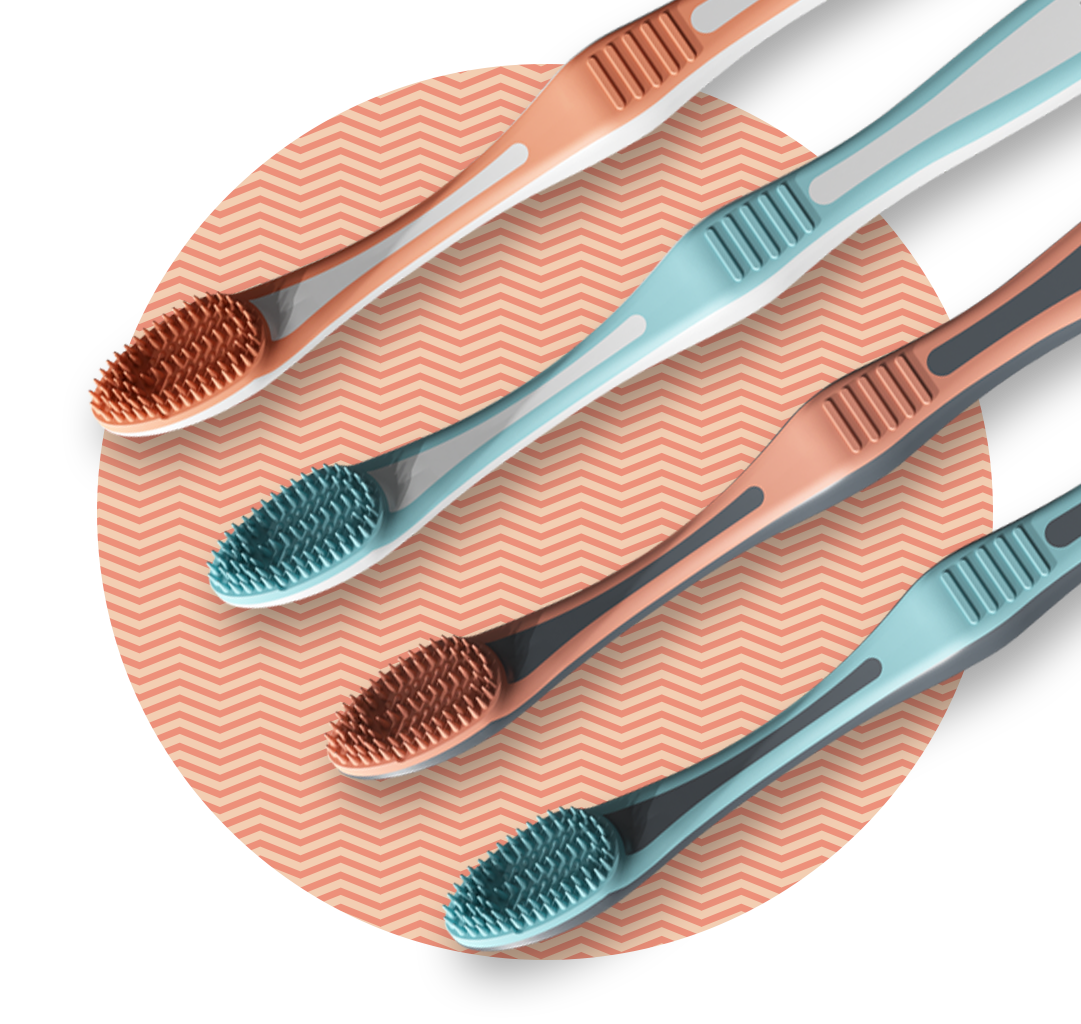
Science Of
A Healthy Mouth
BIOFILM
Biofilm is a layer of bacteria that can accumulate either inside or on the body. It manifests as a sticky white plaque, commonly found on teeth and around gums. This plaque can solidify into tartar or dental calculus, which cannot be removed at home. If left untreated, biofilm can lead to inflammation of the gums, resulting in gingivitis and gum disease.
GINGIVITIS & GUM DISEASE
Gingivitis is a mild form of gum disease that involves inflammation of the gums. It is often caused by plaque buildup, leading to red, swollen, and bleeding gums. If left untreated, gingivitis can progress to more severe forms of gum disease, known as periodontitis, which may result in tooth loss.
ENAMEL
Tooth enamel is the outermost layer of the tooth and is the hardest and most mineralized substance in the human body. It acts as a protective covering for the tooth, safeguarding it against decay and damage. It's important to take care of enamel through proper oral hygiene practices to prevent erosion and cavities.
TOOTH ABRASION
Overbrushing your teeth can lead to enamel wear, gum recession, and increased tooth sensitivity. It may also contribute to irritation of the gums and tooth decay. It is important to brush gently and use a soft bristle brush.

DR. JACK GRUBER
Clinically patients are presenting with gingivitis and gum disease, tooth sensitivity, and abrasion. Dr. Jack Gruber, an educator and one of New York’s most sought-after periodontists, saw the damage firsthand over the course of his career. He encouraged his patients to change their habits, and he trained his students – the next generation of periodontists – to help patients unlearn the bad habits they’d followed their whole lives. However he realized it wasn’t the “habits” that needed changing. It was the tool. Dr. Gruber started experimenting with different brushing materials and personally designed the revolutionary Propr brush, with it’s iconic super soft scrubbers that gently clean the teeth and gums, while doing no harm. It’s time to stop the damage and start the healing.
-
THE SCIENCE
As an educator that believes in the scientific method he piloted two studies on this new brush. Below are the findings and the links to the full studies.
COMPARISON OF SOFT TOOTHBRUSH AND NEW ULTRA-SOFT CLEANER IN ABILITY TO REMOVE PLAQUE FROM TEETH
This comparison of the soft toothbrush versus the brushless cleaner is significant to the oral health field because it showed us that both are equally effective in their ability to remove plaque from teeth. The statistics suggest that while it does not matter which device was used, the brushless cleaner can stand up to the conventional soft toothbrush in plaque removal. Because this device is still in the beginning stages, there are gaps in the literature. However, the brushless cleaner appears to be gentler on the gingiva and may show promise in the future for preventing gingival recession. Click here for the study
A MANUAL BRISTLELESS TOOTHBRUSH DEMONSTRATES SLIGHT IMPROVEMENT IN GINGIVAL RECESSION COMPARED TO A CONVENTIONAL SOFT MANUAL BRUSH
Over 9 months, no lasting major detrimental changes were observed in either the test or control group, and it appears that both the bristleless or conventional brush design can produce consistent plaque and inflammation control in patients on periodontal maintenance. While complete recovery of lost gingiva was not seen at sites with deep gingival recession, development of improved gingival appearance was apparent in the test group, as was slight, but statistically significant improvement of gingival recession in sites with facial or lingual recession. This may be clinically relevant as a soft, bristleless toothbrushes may be better at maintaining gingival margin positions in patients with a history of aggressive toothbrushing. Click here for the study
-
THE UGLY TRUTH
Traditional nylon bristle brushes wear away enamel and damage gums, no matter how soft they are. Toothbrush makers have known this for years, which is why they keep trying to make nylon bristles softer and softer. The Propr brush replaces the nylon bristles on traditional toothbrushes with super soft thermoplastic elastomer scrubbers that gently clean the teeth and the gums.
Think about it. Would you clean your expensive eyeglasses with sandpaper or a microfiber cloth? How about washing your car with a nylon bristled brush instead of a sponge? Of course not. They’d be ruined. Sadly, you’re doing the same thing to your mouth, two to three times a day. Every day, for you entire life.

